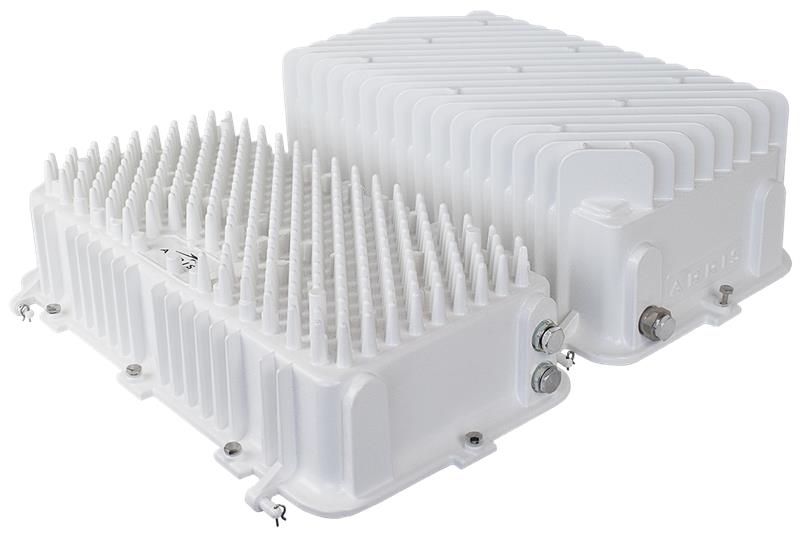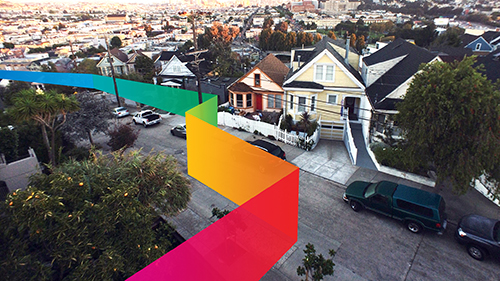Many cable operators still run HFC cable access networks at sub-split frequencies; CommScope estimates that approximately 80% of Converged Cable Access Platforms (CCAPs) currently in operation support full DOCSIS® 3.1 operation, but only 30% of them currently operate with mid-split or high-split networks. Operators who are currently still operating sub-split networks haven’t begun to unlock the full potential of their network assets—nor have they laid the foundation for the transition to next-generation network technologies such as DAA or Node PON. But with the advent of new, next-generation technologies, which support increased bandwidth, throughput speeds and capacities, many cable operators have already begun the process of modernizing their networks to improve performance and lay the groundwork for next-generation technology deployments. This process often raises concerns over “regret spending”—investing in current technology, only to have it supplanted in a few years by more-advanced or better-performing products, requiring new expenditures to upgrade recently-purchased equipment.
To address this concern, CommScope has developed a “deep” lid version of its Opti Max® OM4 and NC4000® optical node series. The deep lid variant is an economical option for both optimizing current HFC network performance and paving the way for future deployments of next-generation technologies. Current investments in these nodes can help improve network performance now and still retain their value as new technologies come to market in the future.

The deep lid form factor supports a variety of network technologies not currently supported by standard lid OM4 housings, from optimized D3.1Enhanced (D3.1E) high-split network operation to next-generation Distributed Access Architecture (DAA) and Node PON technologies. Cable operators can choose one of two deep lid options: a factory-configured deep lid OM4 series node or an upgrade kit that enables field technicians to modify fielded, standard-lid OM4 nodes with deep lids. This flexibility helps cable operators choose the deep lid option which best suits their budgets and upgrade plans.
The deep lid explained
Standard lid OM4 housings have a total of depth of ~10 inches. This depth of housing supports the form factor of previous generation OM4-style and NC4-style analog and digital transmitters and receivers. OM4 deep lid housings, on the other hand, have a total depth of ~11.4 inches; this added depth supports the form factors of a wider variety of CommScope’s node-based modules: NC4-style receivers and transceivers in OM4 deep lid housings, DAA modules, and Node PON modules. The deep lid, therefore, provides cable operators with support for a wider range of network upgrade options than the standard lid.
The deep lid design also features improved heat dissipation to further support future power-hungry applications such as Node PON. Deep lids also support an NC4-style high-performance, high-efficiency power supply, designed specifically to support the powering requirements of DAA modules.
The deep lid and optimized HFC access network performance
Since many cable operators will choose a mid-split or high-split plant upgrade as the quickest and most-cost effective way of optimizing their current plants, they can choose to deploy deep lid nodes in one of two DOCSIS HFC access split upgrade scenarios:
- To transition from sub-split to mid-split operation as an intermediate step toward an eventual high-split plant upgrade
- To support a mid-split to high-split plant upgrade
Either option supports enhanced network operation strategies that can unlock the latent speeds and capacities available in current HFC cable access networks.
While standard lids support mid-split digital return operation and high-split analog return operation, the DT4600—CommScope’s high-split digital return transceiver—can only be installed in a deep lid form factor in OM4 series nodes (NC4 series nodes already support the DT4600 form factor). Therefore, cable operators using standard lid OM4 nodes in a current mid-split plant with digital return, but who have plans to upgrade the plant for high-split operation, can install deep lid nodes with DT4600 return transceivers to continue operating at mid-split frequencies; they can then seamlessly transition to high-split operation when they are ready without installing new digital return transceivers.
Access to DOCSIS 3.1E performance
Cable operators can also leverage a mid-split or high-split deep lid node deployment to support the roll-out of DOCSIS 3.1Enhanced (D3.1E) technology. D3.1E can significantly enhance downstream speeds and capacities with minimally invasive changes to a current network.
D3.1E does this by expanding the maximum OFDM capacity of a mid-split or high-split network from two to four OFDM channel blocks (with SC-QAM channels) or five OFDM channel blocks (without SC-QAM channels). D3.1E retains support for a maximum of two OFDMA channel blocks in a high-split upstream path, with throughput speeds of ~1.7 Gbps in the upstream. Besides the plant upgrade and deep lid node deployment, D3.1E requirements are minimal: a CMTS software upgrade in the headend—Software Release 13 and higher for E6000® CERs, Software Release v8.12 and higher for C100G CMTS chassis—and targeted deployments of next-generation DOCSIS® 3.1+ or DOCSIS 4.0 CPEs to support D3.1E’s expanded OFDM capacity. Full D3.1E operation—i.e., mid-split or high-split operation without SC-QAM channels—can provide throughput speeds of up to ~8 Gbps in the downstream.
Deploying D3.1E technology in conjunction with a plant upgrade and a deep lid node installation is an excellent way for cable operators to monetize their existing network assets without significant capital expenditures or invasive network construction. D3.1E technology can also bridge the transition from traditional HFC Access Network operation to next-generation DAA or Node PON network designs, while supporting multi-gigabit services over an existing delivery system in the interim.
The deep lid and next-generation networks
CommScope deep lid nodes enable cable operators to upgrade to mid-split or high-split HFC cable access network operation today, while also preparing for future DAA and/or Node PON deployments. The transition from HFC to one of these two technologies is simple and cost-effective, as the following upgrade scenarios demonstrate.
- Upgrade lid for 1x1, 1x2, or 2x2 DAA operation: In this upgrade scenario, a field technician will remove the NC4-style optical modules from the lid of a fielded deep lid node, remove the HFC/RPD adapter plate, and install a CommScope RD2322 RxD module. The RD2322 supports either Remote PHY and Remote MACPHY operation based on the module’s software configuration. Cable operators can install software options that support 1x1, 1x2, or 2x2 segmentation from a single RD2322 module.
- Upgrade lid for DAA operation with expanded upstream segmentation: In this upgrade scenario, a field technician will remove the NC4-style optical modules from the lid of a fielded deep lid node and replace the optical modules with a CommScope RD1424-M4 module. The RD1424-M4 supports Remote PHY operation only. Cable operators can configure up to two downstream and up to four upstream segments without the need for software upgrades.
- Upgrade lid for Node PON operation: In this upgrade scenario, a field technician will install a CommScope XE4202M R-OLT or XP4202 XGS-PON Remote OLT (R-OLT) Module on the right side of the HFC/RPD adapter plate, leaving the NC4-style optical modules in place on the left side of the adapter plate. This node configuration supports up to two downstream receivers and two upstream transmitters for a maximum 2x2 segmentation. The XP4202 XGX-PON R-OLT module supports high bandwidth ITU GPON/XGS-PON based services, while the XE4202M R-OLT supports IEEE EPON/10G EPON based services.
By leveraging an existing HFC deep lid node installation, cable operators can significantly reduce future spends for DAA or Node PON deployments. Even if they choose to go directly from standard lid HFC operation to deep lid DAA or Node PON deployments, they can still realize a cost benefit by simply upgrading the node in the future with new DAA or Node PON modules as they come to market, rather than rebuying a new node.
Conclusion
CommScope’s OM4 series deep lid nodes support both stages of a cable operator’s network evolution, enabling cable operators to increase average revenue per user (ARPU) and keep pace with their competitors, while all but eliminating regret spending as networks continue to evolve. With game-changing technologies such as D3.1E, DAA, and Node PON available now, it’s the perfect time for cable operators to consider deep lid upgrades for their OM4 series nodes.
CommScope offers a full, end-to-end portfolio of next-generation products and solutions for both inside and outside plant operation. For further information about OM4 series deep lid nodes, contact your CommScope Sales Representative.
© 2025 CommScope, LLC. All rights reserved. CommScope and the CommScope logo are registered trademarks of CommScope and/or its affiliates in the U.S. and other countries. For additional trademark information see https://www.commscope.com/trademarks DOCSIS is a registered trademark of Cable Television Laboratories, Inc. All other product names, trademarks and registered trademarks are property of their respective owners.














